Abstract
Mast cells from the peritoneum of mice painted with the contact sensitizing agent picryl chloride degranulate when exposed to antigen (TNP) in vitro. Degranulation was consistently demonstrated 4 days after painting which associated with the ability of mice to produce contact sensitivity reactions as measured by ear swelling and radiometric assays. Serum reagin or reagin-producing cells could not be detected until 6 days after painting but TNP-phage neutralizing activity was detected after 2 days. Mast cell degranulation could be elicited by TNP or DNP derivatives indicating the involvement of antibody.
Full text
PDF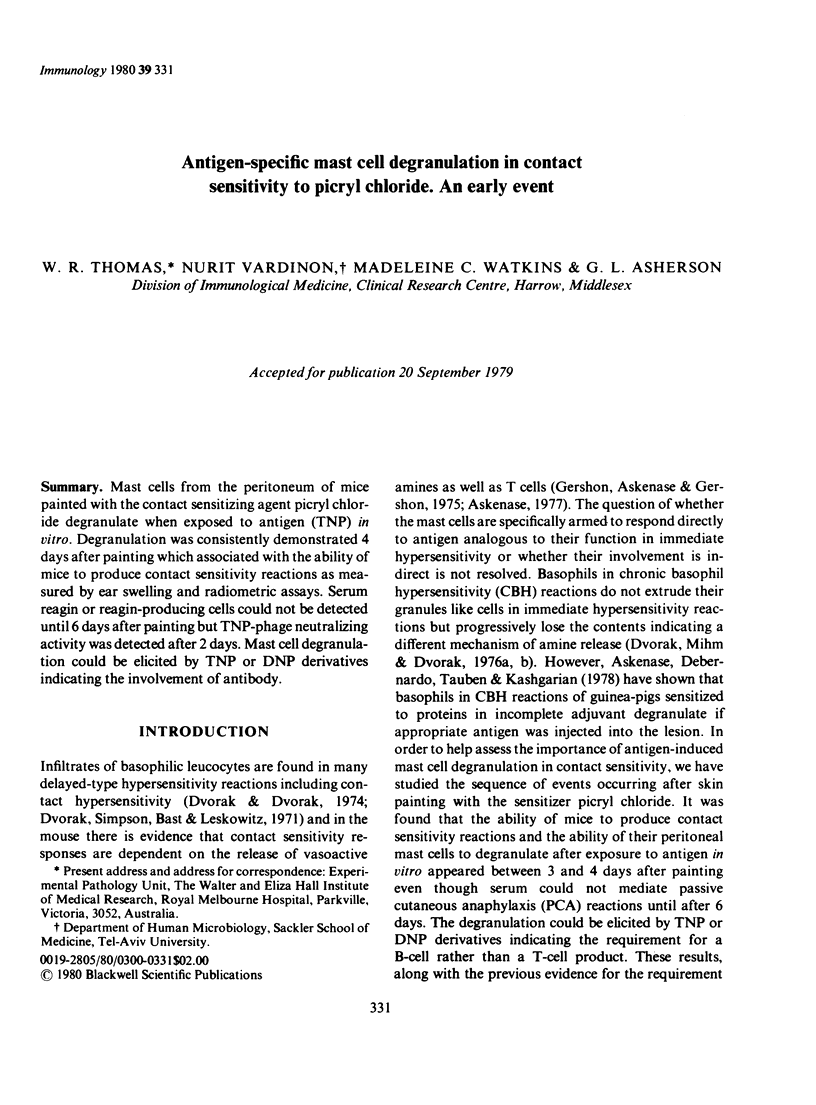
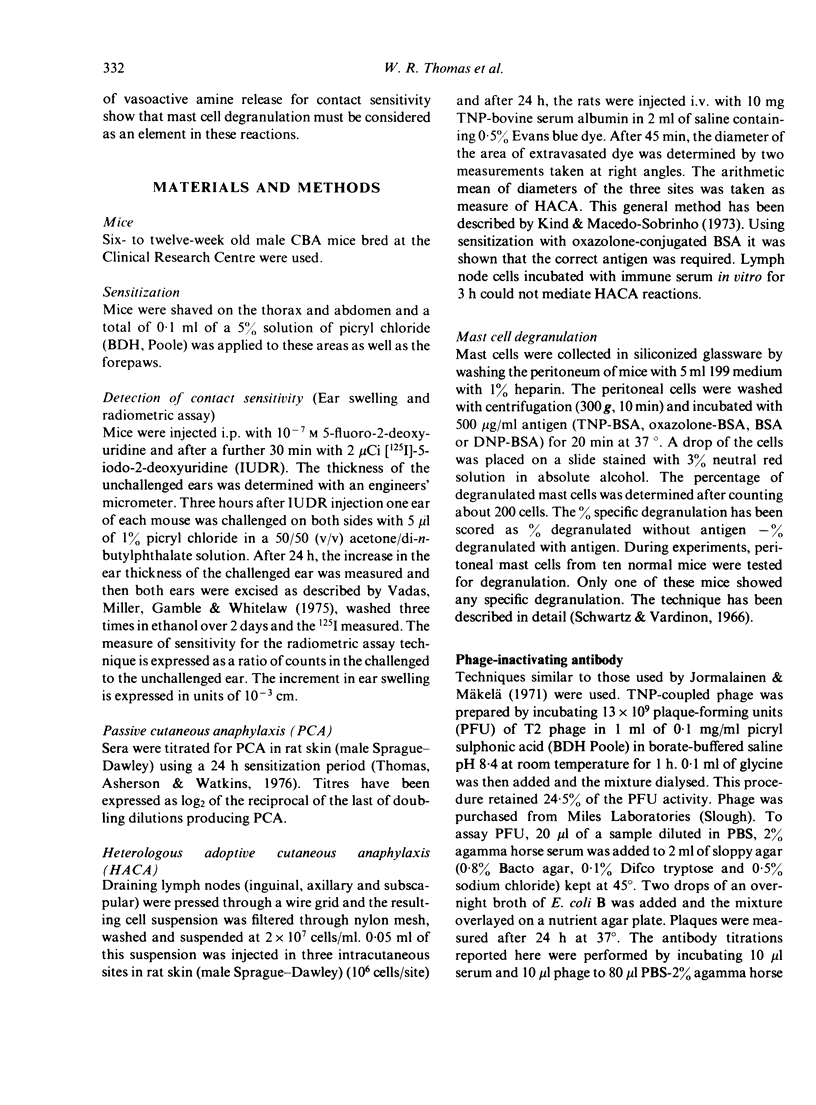
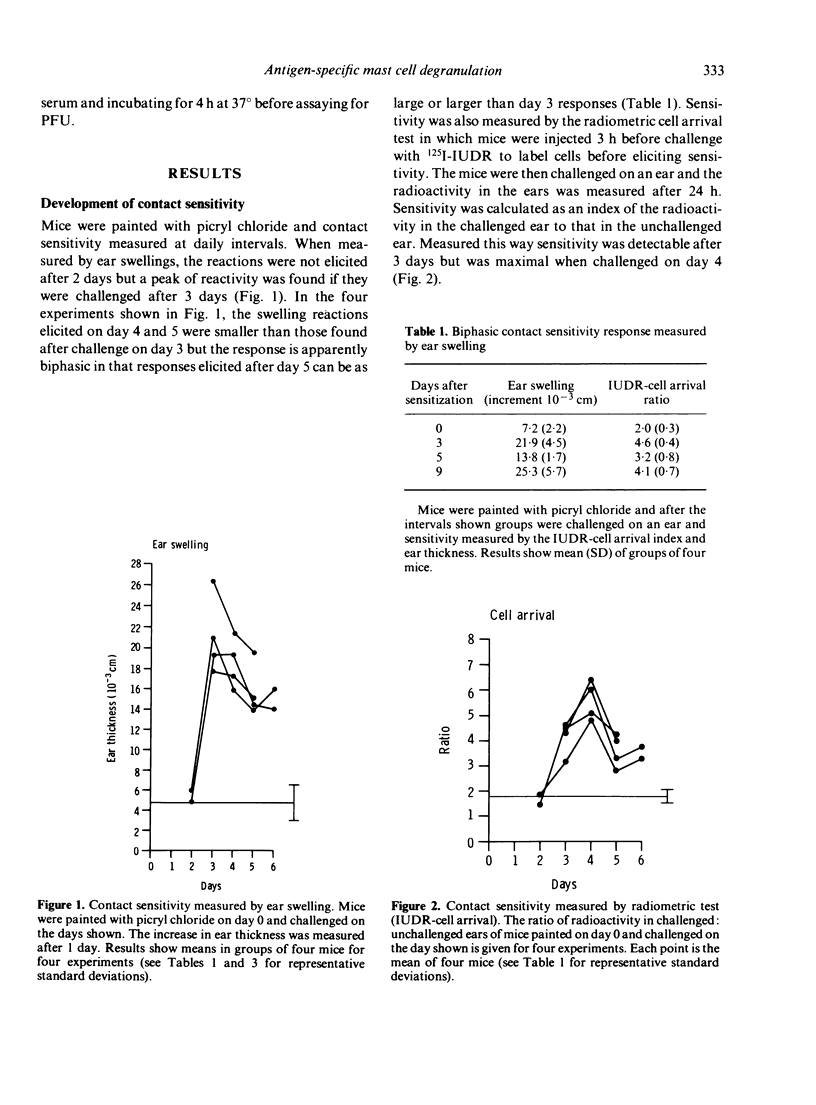
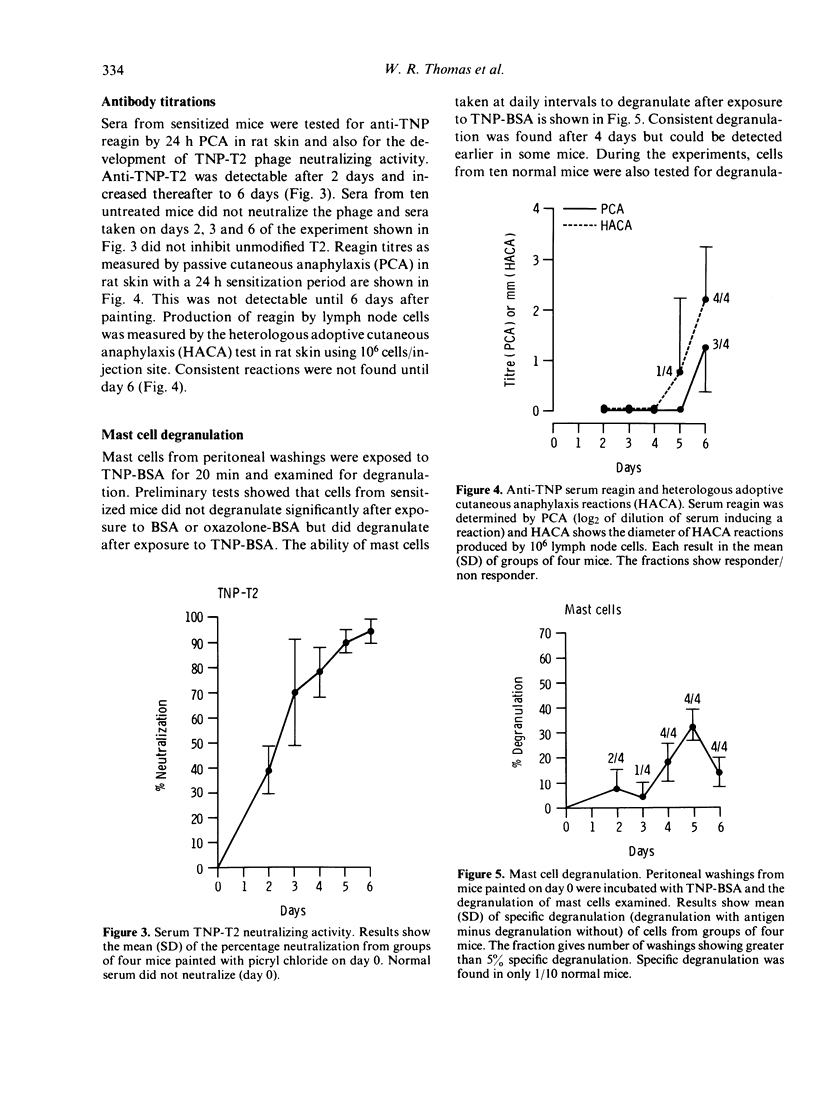
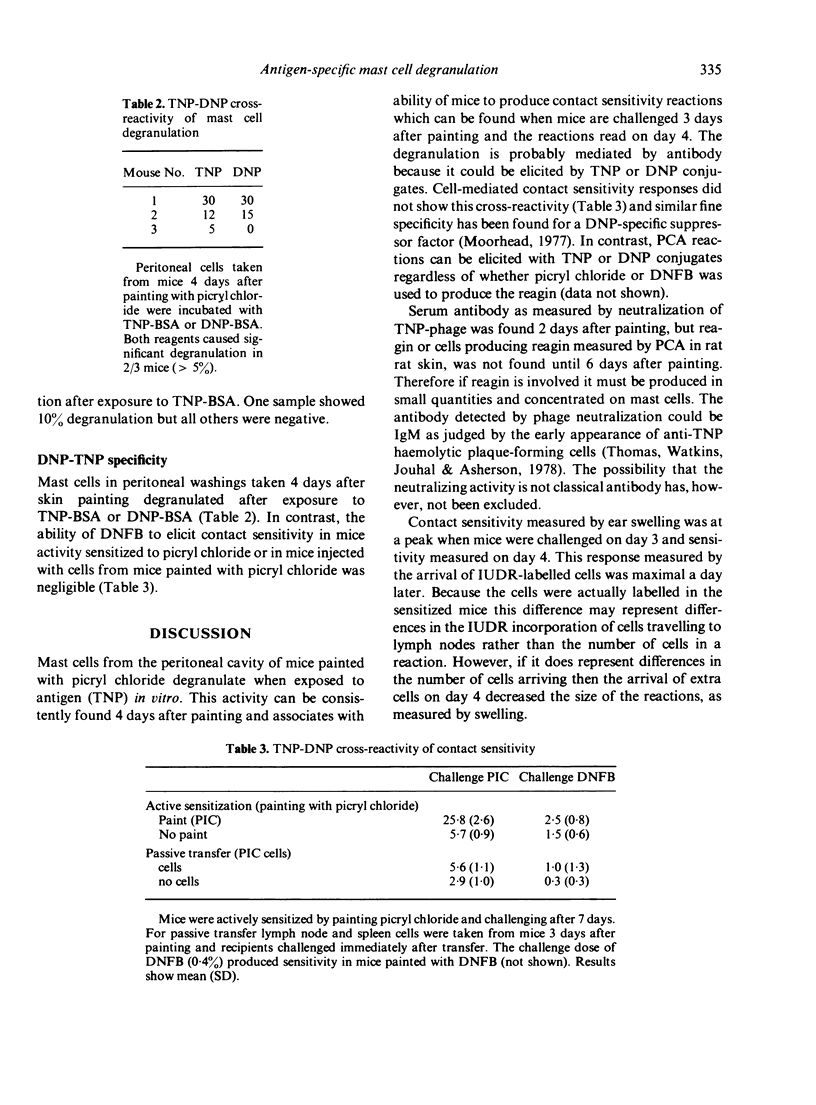
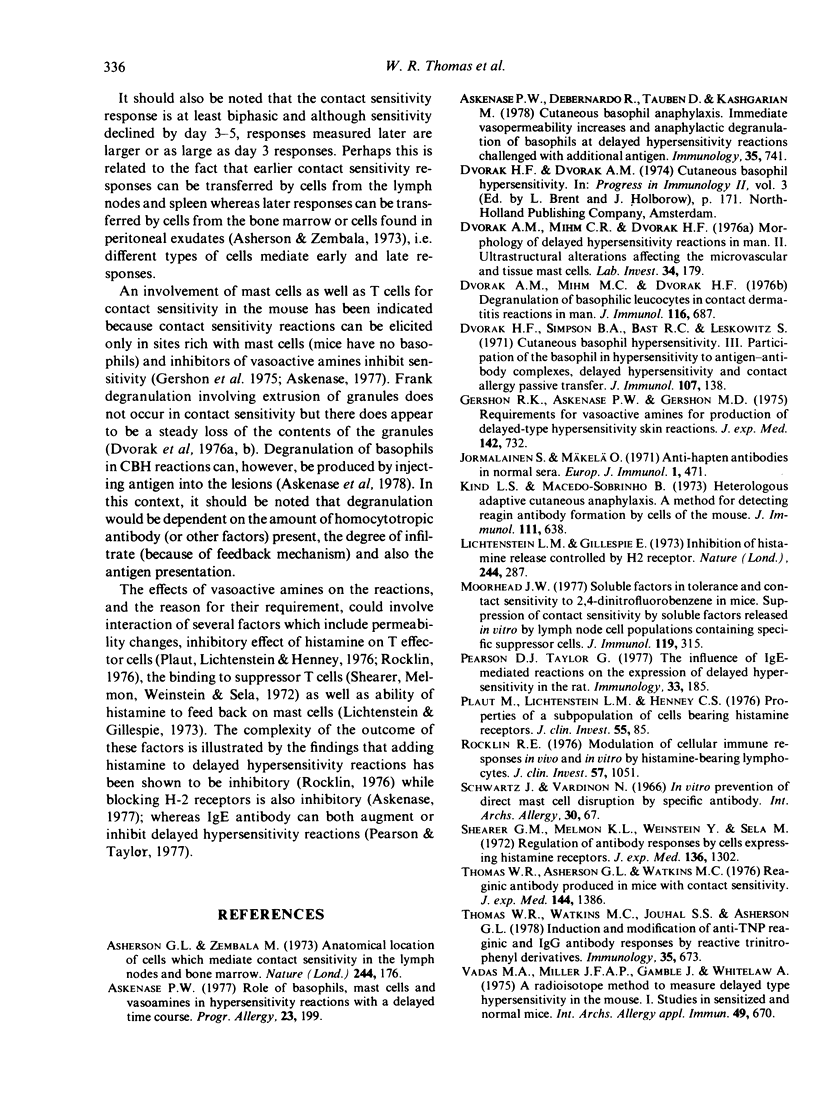
Selected References
These references are in PubMed. This may not be the complete list of references from this article.
- Asherson G. L., Zembala M. Anatomical location of cells which mediate contact sensitivity in the lympho nodes and bone marrow. Nat New Biol. 1973 Aug 8;244(136):176–177. doi: 10.1038/newbio244176a0. [DOI] [PubMed] [Google Scholar]
- Askenase P. W., Debernardo R., Tauben D., Kashgarian M. Cutaneous basophil anaphylaxis. Immediate vasopermeability increases and anaphylactic degranulation of basophils at delayed hypersensitivity reactions challenged with additional antigen. Immunology. 1978 Nov;35(5):741–755. [PMC free article] [PubMed] [Google Scholar]
- Askenase P. W. Role of basophils, mast cells, and vasoamines in hypersensitivity reactions with a delayed time course. Prog Allergy. 1977;23:199–320. [PubMed] [Google Scholar]
- Dvorak A. M., Mihm M. C., Jr, Dvorak H. F. Degranulation of basophilic leukocytes in allergic contact dermatitis reactions in man. J Immunol. 1976 Mar;116(3):687–695. [PubMed] [Google Scholar]
- Dvorak A. M., Mihm M. C., Jr, Dvorak H. F. Morphology of delayed-type hypersensitivity reactions in man. II. Ultrastructural alterations affecting the microvasculature and the tissue mast cells. Lab Invest. 1976 Feb;34(2):179–191. [PubMed] [Google Scholar]
- Dvorak H. F., Simpson B. A., Bast R. C., Jr, Leskowitz S. Cutaneous basophil hypersensitivity. 3. Participation of the basophil in hypersensitivity to antigen-antibody complexes, delayed hypersensitivity and contact allergy. Passive transfer. J Immunol. 1971 Jul;107(1):138–148. [PubMed] [Google Scholar]
- Gershon R. K., Askenase P. W., Gershon M. D. Requirement for vasoactive amines for production of delayed-type hypersensitvity skin reactions. J Exp Med. 1975 Sep 1;142(3):732–747. doi: 10.1084/jem.142.3.732. [DOI] [PMC free article] [PubMed] [Google Scholar]
- Jormalainen S., Mäkelä O. Anti-hapten antibodies in normal sera. Eur J Immunol. 1971 Dec;1(6):471–478. doi: 10.1002/eji.1830010613. [DOI] [PubMed] [Google Scholar]
- Kind L. S., Macedo-Sobrinho B. Communications. Heterologous adoptive cutaneous anaphylaxis: a method for detecting reaginic antibody formation by cells of the mouse. J Immunol. 1973 Aug;111(2):638–640. [PubMed] [Google Scholar]
- Lichtenstein L. M., Gillespie E. Inhibition of histamine release by histamine controlled by H2 receptor. Nature. 1973 Aug 3;244(5414):287–288. doi: 10.1038/244287a0. [DOI] [PubMed] [Google Scholar]
- Moorhead J. W. Soluble factors in tolerance and contact sensitivity to 2,4-dinitrofluorobenzene in mice. I. Suppression of contact sensitivity by soluble suppressor factor released in vitro by lymph node cell populations containing specific suppressor cells. J Immunol. 1977 Jul;119(1):315–321. [PubMed] [Google Scholar]
- Pearson D. J., Taylor G. The influence of IgE-mediated reactions on the expression of delayed hypersensitivity in the rat. Immunology. 1977 Aug;33(2):185–190. [PMC free article] [PubMed] [Google Scholar]
- Rocklin R. E. Modulation of cellular-immune responses in vivo and in vitro by histamine receptor-bearing lymphocytes. J Clin Invest. 1976 Apr;57(4):1051–1058. doi: 10.1172/JCI108347. [DOI] [PMC free article] [PubMed] [Google Scholar]
- Shearer G. M., Melmon K. L., Weinstein Y., Sela M. Regulation of antibody response by cells expressing histamine receptors. J Exp Med. 1972 Nov 1;136(5):1302–1307. doi: 10.1084/jem.136.5.1302. [DOI] [PMC free article] [PubMed] [Google Scholar]
- Thomas W. R., Asherson G. L., Watkins M. C. Reaginic antibody produced in mice with contact sensitivity. J Exp Med. 1976 Nov 2;144(5):1386–1390. doi: 10.1084/jem.144.5.1386. [DOI] [PMC free article] [PubMed] [Google Scholar]
- Thomas W. R., Watkins M. C., Jouhal S. S., Asherson G. L. Induction and modification of anti-TNP reaginic and IgG antibody responses by reactive trinitrophenyl derivatives. Immunology. 1978 Oct;35(4):673–682. [PMC free article] [PubMed] [Google Scholar]
- Vadas M. A., Miller J. F., Gamble J., Whitelaw A. A radioisotopic method to measure delayed type hypersensitivity in the mouse. I. Studies in sensitized and normal mice. Int Arch Allergy Appl Immunol. 1975;49(5):670–692. doi: 10.1159/000231449. [DOI] [PubMed] [Google Scholar]


